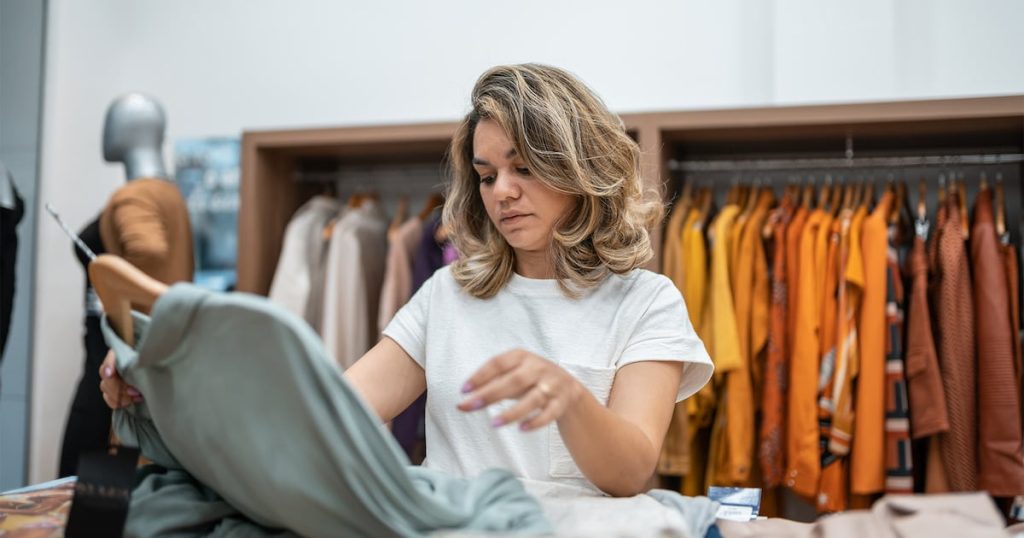If you’re searching for a good deal on a secondhand Chanel classic flap in black, prepare to be confused.
On Vestiaire Collective alone, you can find the bag in “good condition” from $1,980 – $11,300. Similarly broad ranges can be seen on other platforms and resale apps.
“It’s all not very logical,” said Hanushka Toni, founder of boutique luxury reseller Sellier.
The explosion of online secondhand sites has made it possible for anyone to put their castoffs up for sale. But for every expert seller who’s doing a deep dive on demand for a Supreme box logo hoodie, there’s seemingly 10 more who are sure they can make a profit off an ill-conceived shopping spree, or just want to clear space in their closet.
Wildly inflated resale listings are popular fodder for Instagram accounts like Dmdrama, which chronicles toxic interactions between secondhand buyers and sellers for over half a million followers. Most of these issues appear online while brick-and-mortar resale retailers continue to flourish due to the level of convenience and customer service.
The accessible nature of online resale opens the door to a lack of knowledge and disconcerting interactions between buyers and sellers, which holds the secondhand market back. Buyers get frustrated by unrealistic prices, and the nagging feeling that they might be getting ripped off.
At the same time, legitimate sellers struggle to move their inventory in markets flooded with moldering listings for a $90 Hollister sweater that originally retails for $15, as called out by podcaster Victoria Smith on TikTok. Or worse: their items are eternally “favourited” but never purchased while potential buyers hold out for a better bargain.
Resale has bigger problems than pricing: big luxury brands are struggling with lacklustre demand, which carries over into the secondhand market.
The category is still growing – according to Thredup’s annual resale report, by 2028 the global secondhand market will reach $350 billion. But convincing buyers and sellers to put their faith in these marketplaces remains one of the sector’s biggest hurdles. After counterfeits, pricing is one of the biggest barriers to building that trust.
“People feel very passionate about items being priced at exorbitant amounts,” said Chris Gray, a consumer psychologist. “Not just because of the price, but because it represents a feeling of being taken advantage of and exploited.”
Why is there no consensus on prices?
Sometimes, the reason behind an absurdly high price is simple greed. But what compels sellers to list identical items at wildly different price points is often far more complex. Resale experts cite a few common reasons that can be grouped into the following concepts:
(Emotional) Investment Many sellers hope they’ll recover most of what they originally paid for. They fail to account for the fact that, like a new car, the vast majority of clothing and accessories depreciate rapidly as soon as they leave the store. “This is especially true for haute couture,” said Toni. “A £7,000 Elie Saab dress will resell for a maximum of £800 pounds. There’s also a lot of sentimentality – people are emotionally attached to items even if they hope to sell.”

Hype & Appreciation fallacy Certain bags from Hermès and Chanel or hard-to-get, sold-out trend pieces can retain their value or even appreciate. But this is the exception, not the rule. “A lot of my clients come from the hypebeast world, where they could sell a sneaker or Supreme sweater for three times their retail price. But that’s not how secondhand clothing works, especially in times of economic downturn,” said Luke Fracher, founder of menswear resale boutique Luke’s. Even in the hypebeast world, outrageous markups don’t fly like they used to—the sneaker bubble has burst.
Loss shock The difference between an item’s purchase price and its resale potential often shocks hopeful sellers. “Especially for aspirational customers, it’s quite painful to realize an item they paid and saved much for isn’t as valued in the eyes of the average resell consumer,” said Toni.
Commission omission Another contributor to the pricing dilemma are commissions. Commissions vary greatly across platforms, with ranges of 15-50 percent depending on the reseller. Psychologically, it is not obvious where platform commissions fit into pricing strategy. Sellers tend to “bake commission into their asking price,” according to Toni, meaning once commission gets added on top, the price is significantly above the market.
Lack of knowledge Scattered pricing is often simply due to lack of knowledge. “As a resale professional, I know how to price an item for it to sell within 48 hours,” Fracher said. “Most people don’t know the market, my job is to temper expectations.”

Cultural differences Lack of resale understanding usually leads to inflated prices in Europe and the US, but in markets like Japan, this lack of knowledge combined with cultural factors can work in buyers’ favour. “Japanese sellers are afraid their items won’t sell. They care about buyer satisfaction and fear negative reviews, which leads them to skew on the low side,” said Sei Sato, director of cross-border e-commerce service Buyee.
Danger zone
There is, of course, the issue of intentional deception, aka trying to rip buyers off.
Danielle Vermeer, head of social commerce at the resale site Thredup and a longtime resale customer (she said she has only shopped secondhand for the last 14 years), said sellers use all sorts of verbal and visual tricks to convince buyers to pay higher prices.
One listing she found on a rival site for a corset top was riddled with language optimised to place higher in searches, with Gen-Z trending buzzwords like “coquette, fairy-core, dainty doll, lolita and Y2K”. Via reverse image search, the item was revealed to be a Shein top, which wasn’t disclosed in the listing.
“This is how people talk, we call it TikTok speak, where everything is an aesthetic, everything is some kind of trend. It was a funny way of describing what is essentially just a white corset or a plaid blazer,” she said.
Depop recently initiated a search feature to help listers and buyers identify products using artificial intelligence. The technology is meant to help weed out dupes and deceptive listings, which often clog the top results for in-demand items. Depop, as well as Poshmark, have rolled out features that create listings automatically.
Desert Roses
In the wild west of resale pricing, there are some buyer-friendly strategies and tips that can create more uniformity, fairness and fun for all parties.
For resale fans, looking abroad can pay off. Japanese luxury resellers are developing a global reputation, helped by the weaker yen and Japan’s reputation for high quality stock.
Then, there are auction-style platforms where buyers determine their own price. “We think this makes shoppers feel less ripped off,” said George Burt, chief operating officer of ShopGoodwill, the nonprofit’s commercial resale arm.
Or buyers and sellers can sidestep chaos of online resale entirely. Brick-and-mortar stores are finding success pitching themselves as the safer, saner way to shop secondhand. The in-store expertise boosts the likelihood of a transaction being successful – and fast.
“I tell my customers, we can either sell a product today at the recommended price, or we can wait weeks or months, at a higher price, with the risk of not selling at all,” said Toni. “When an item is priced too highly and remains on our website too long, buyers question its desirability.”








